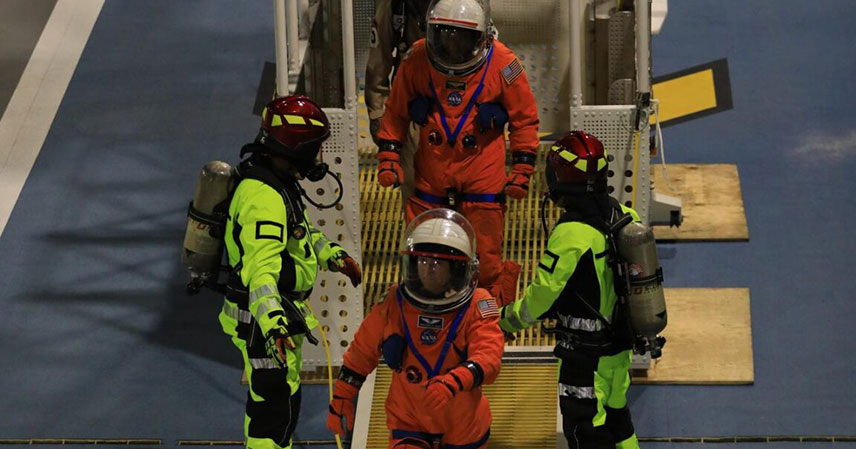The world of space exploration is constantly evolving, with new rockets and technologies pushing the boundaries of what’s possible. This week saw significant advancements from major players, including Arianespace, United Launch Alliance (ULA), and China’s Geespace. These launches mark important milestones in the ongoing global space race, highlighting the competition and innovation driving the industry forward.
From the successful flight of the Ariane 6 to the impressive launch of ULA’s Vulcan Centaur, and the continued success of China’s sea-launched Jielong 3, this period showcases a remarkable surge in orbital launch capabilities. Let’s delve into the details of each launch and what they signify for the future of space travel.
Arianespace’s Ariane 6 Triumphs 🇫🇷
Arianespace’s Ariane 6 rocket successfully completed its third orbital flight, carrying a European weather satellite. This launch marks a significant achievement for Arianespace, demonstrating the reliability and capability of their new heavy-lift rocket. The Ariane 6’s third flight, achieved within 13 months of its inaugural launch, showcases a rapid development and deployment cycle, compared to other new entrants in the market.
This success underscores Europe’s continued commitment to independent space access, providing a vital alternative to other launch providers. The successful deployment of the weather satellite highlights the practical applications of this technology and its importance for various sectors, including meteorology and climate research.
ULA’s Vulcan Centaur Soars 🇺🇸
United Launch Alliance (ULA) also celebrated a major milestone with the third successful launch of its Vulcan Centaur rocket. This heavy-lift rocket successfully completed a US military mission, showcasing its capabilities for transporting large and complex payloads into orbit. The Vulcan Centaur represents a significant investment in American space infrastructure, designed to meet the demands of both commercial and government clients.
The launch, however, came over 19 months after the inaugural flight, highlighting the complexities involved in developing and deploying new rocket systems. This longer timeline compared to Ariane 6 emphasizes the challenges of integrating new technologies and ensuring operational reliability before widespread adoption.
China’s Jielong 3 Continues its Ocean-Based Successes 🇨🇳
Adding to the flurry of successful launches, China’s private satellite operator, Geespace, deployed 11 satellites using a Jielong 3 rocket launched from a sea platform in the Yellow Sea. This marked the sixth successful flight for the Jielong 3, demonstrating the reliability and efficiency of this unique sea-based launch system.
The use of a sea platform offers advantages in terms of geographical flexibility and reduced reliance on established land-based launch facilities. This successful deployment of 11 satellites further expands Geespace’s Internet of Things (IoT) constellation, boosting low-power connectivity in key emerging markets. The development of this technology showcases the increasingly significant role of commercial enterprise in China’s space program, a trend also seen in the West with companies like Firefly Aerospace aiming for lunar leadership.
The Global Space Race Heats Up 🌍
These recent launches highlight the intensified competition and remarkable progress in the global space race. The successes of Arianespace, ULA, and China’s Geespace demonstrate the increasing capabilities of multiple nations and private companies to access and utilize space. The rapid development and deployment of new rocket technologies is reshaping the landscape of space exploration and commercialization.
The comparison of launch timelines between these rockets also reveals valuable insights into the complexities and challenges of bringing innovative space technologies to market. The varying timelines underscore the need for continuous innovation and efficient project management to maintain a competitive edge in this dynamic field.
Key Takeaways 🔑
- Arianespace’s Ariane 6 achieved its third successful launch, showcasing rapid development and deployment.
- ULA’s Vulcan Centaur completed its third mission, demonstrating its capabilities for heavy-lift payloads, though with a longer development timeline.
- China’s Jielong 3 continued its success with a sixth launch from a sea platform, expanding its IoT constellation.
- These launches highlight the increasing competition and innovation in the global space race.
- The varying development timelines underscore the challenges and complexities of bringing new rocket technologies to market.
The recent successes of Arianespace, ULA, and China’s space program mark a significant step forward in global space exploration. The competition continues to drive innovation, promising further advancements and accessibility to space in the years to come. The future of space travel is bright, and these launches are just the beginning.
Source: Rocket Report: Ariane 6 beats Vulcan to third launch; China’s first drone ship



